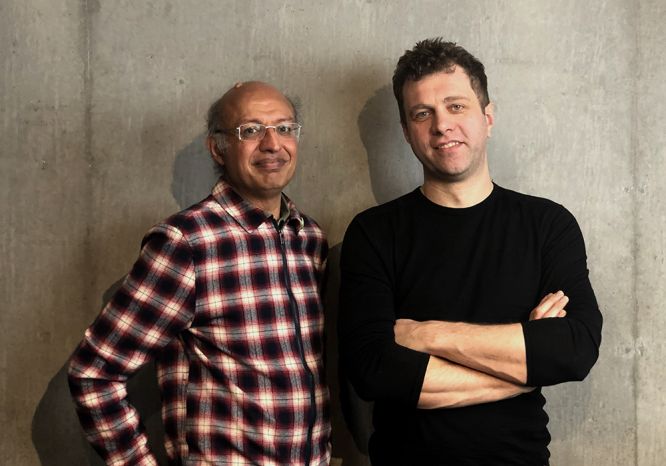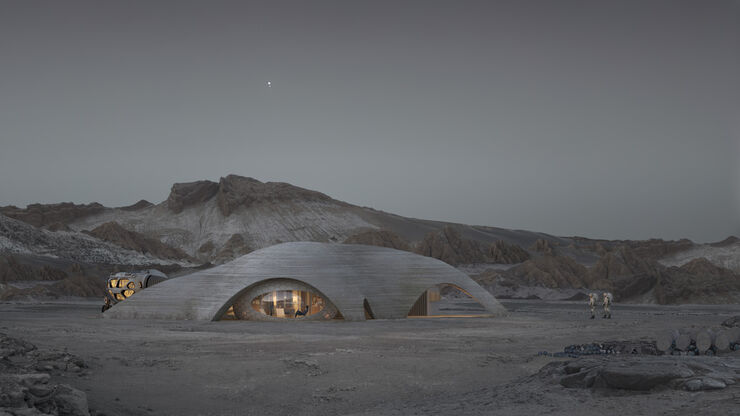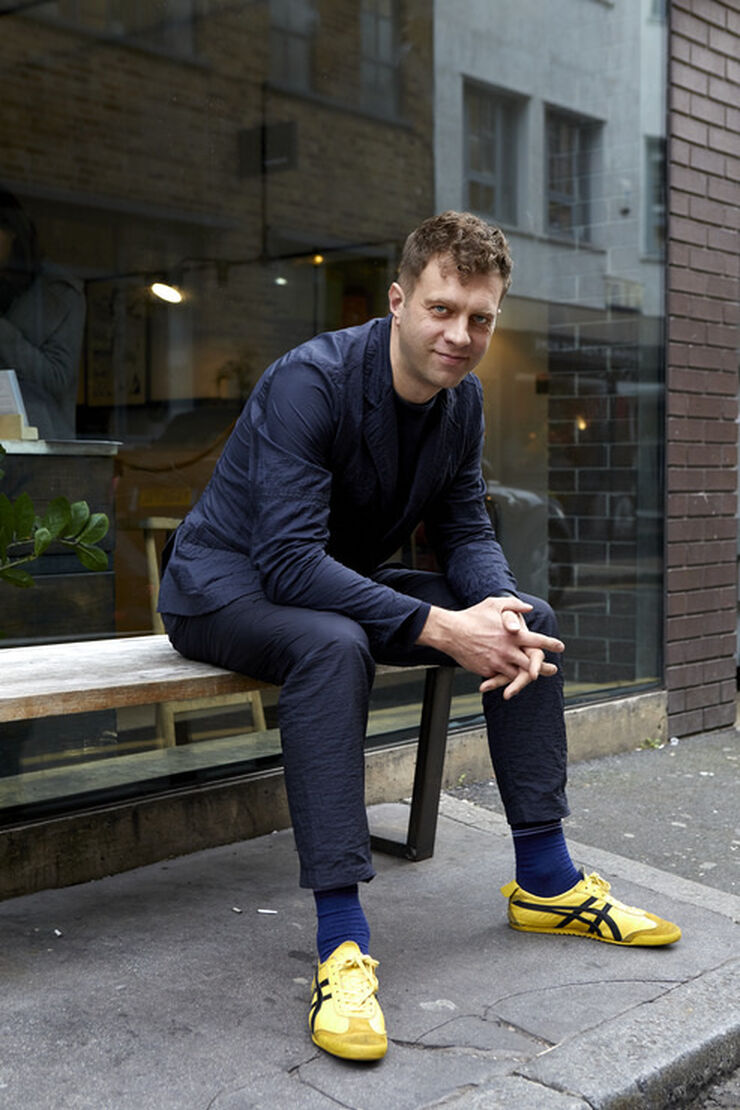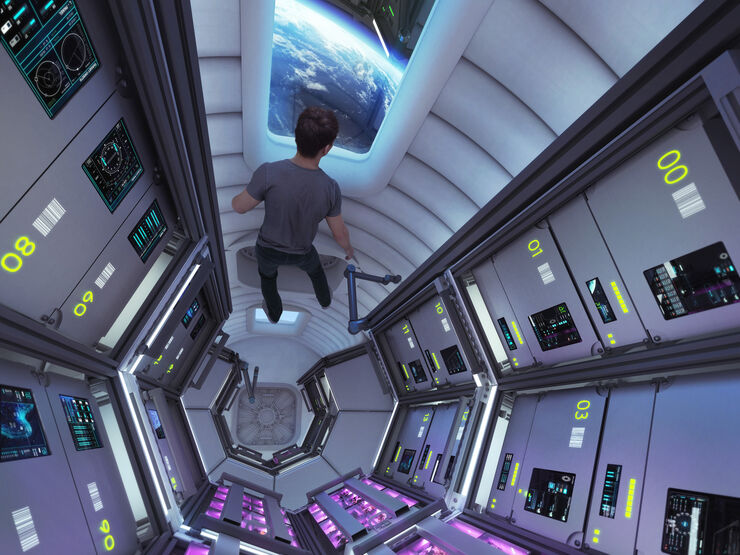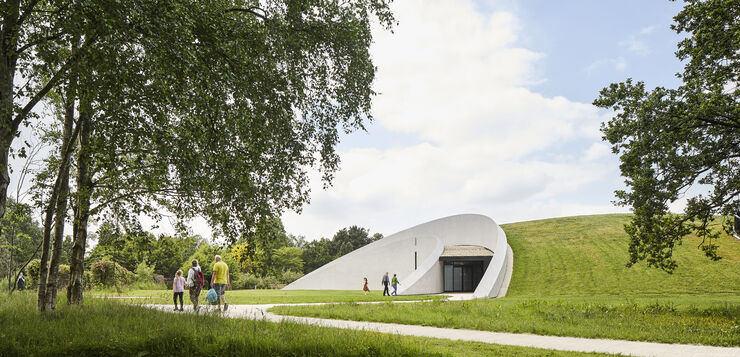Transcript
Xavier De Kestelier introduces the podcast episode:
Hi. I’m Xavier De Kestelier. I’m an architect at Hassell Studio. Welcome to Hassell Talks.
As an architect over the last year or so I got involved in quite a very special project. It was actually a competition for NASA, and the brief of the competition was to design a habitat for four astronauts on Mars. How would they live? What would that place look like? Now, once you start a competition like that as an architect and we needed quite a lot of info and data. How is it, how would it be to live on Mars?
We started to call around and all roads seem to lead to this one person. This guy called Professors Sanjeev Gupta. Everyone told me, “Yeah. Talk to Sanjay. He’ll be able to help you out.” So of course, what I did, I emailed Professor Sanjeev Gupta. Sanjeev, you’re here with us now, today.
Sanjeev Gupta responds
Hi, it’s great. Thanks.
Xavier continues
Thank you so much for being here. The main thing what happened when I asked Sanjeev, “Look, I’m going to organise a little symposium, and the idea of the symposium is to get as much information as possible and people to come together, scientists, engineers to come and critique our little proposal. But Sanjeev, you never made it to my symposium. Can you explain why?
Sanjeev answers
Well, I was actually going to quite an important meeting where we were discussing the proposed landing site for one of the future rovers, the European Rover, actually. So I couldn’t miss that because I was chairing the meeting. So sorry, Xavier.
Xavier asks:
So you were doing actual Mars work, for real stuff going to Mars. Okay, I think that’s a good excuse. You’re a professor of geology and Mars science. When I asked you what you actually do with NASA, because you work with NASA at the moment. And I always tell my friends, “Yeah, I know the guy that drives the Mars Rover.” I know it’s not 100% accurate, but for me, it’s kind of close. Can you tell me what you really do with the current Mars mission?
Sanjeev Gupta responds:
Okay. So it’s 100% inaccurate. Nobody would ever let me near a Mars Rover. I am a bad driver. So what I do is I have two roles. I work on the NASA Mars science laboratory, the Curiosity Rover. I look at the images that the Rover collects and I ask the rover to collect images, that I analyse the geology of. So I look at the rocks and my job is to reconstruct what the ancient landscape on Mars miles was like. So we know what the landscape presently miles like, but I can look into those pictures and sort of try and work out if Mars was warm and wet in the past. And secondly, I have an operations role, which is I’m a strategic planner for the mission, so one of eight people. We’re kind of the brains trust for the rover. So actually, today I am responsible for the rover, so after this recording, I will go back home to my armchair and I will plan out what the rover will be doing.
Xavier asks:
And tell me, how you plan that? What are the tools that you have to plan something like that?
Sanjeev responds:
It’s interesting. It’s a large team. And so what I will be doing is working closely with the engineers in thinking about what experiments we want to do on Mars. We’re actually finishing up a set of experiments, so we’re just making sure that we’ve ticked all the boxes, et cetera. Basically, it’s about eight hours on a telephone. That’s what it is.
Xavier asks:
What stuff have you found out in the last few years with the Mars rover?
Sanjeev answers:
The big results really of the QST mission that have been the game-changers, if you like, have been that we’ve discovered that the place that Curiosity is exploring, the Gale Crater had really habitable environment. Would have been rivers, it would have been likely rainfall or snowfall falling on the mountains of the crater rim, that sort of melted. And there would have been rivers, and all the water in that river would have been transported into lakes, and so we have clear evidence for lakes existed, and that probably lasted for hundreds of thousands, if not millions of years.
Xavier says:
Me as an architect, I’m of course interested in humans being a Mars because that’s what the project was about. And as an architect, you design for humans. Hopefully, I think we can start to convince space agencies that as a designer, we have a crucial role to play in space development.
Sanjeev answers:
I think so. And I think as a scientist, I’ve not really thought of that, but I have been involved in recent years in actually thinking about some of the first landing sites where humans might actually go to, and that’s been fascinating. It’s fascinating that we’re already thinking about that. But at the end of the day, we’re actually getting to Mars to do science. And putting the big science; we’re actually going to do with geology, habitability, what Mars was like early in its history and the search for life.
What we do in this exploration zone is we have obviously the landing site, and then around that, we have defined regions of interests we call them. So there’s scientific regions of interests where our key targets, where we would actually be able to test different hypotheses about Mars science, and search for life and search for the early history of Mars. But also we have engineering regions of interest. And those are really because any human expedition to Mars would have to be self-sustaining.
Xavier asks:
Yeah. So what do we need as a human? What do you think?
Sanjeev says
We obviously, need oxygen to breathe, we need water. And we can’t take that with us. And we need oxygen obviously, as rocket fuel to bring those humans back. Certainly, space agency-
Xavier asks
… Do we want to go back?
Sanjeev answers
We’ll not want to send astronauts on a one-way mission. And frankly, as a scientist, I want the rocks bags.
Xavier says.
There’s some self-interest there.
Sanjeev answers
So there’s a bit of self-interest there. So it’s not this Mars one-way journey. And so actually what we need is resources. We actually need to mine resources on Mars and that’s geology too. So actually, not only are we looking at the geology for scientific purpose, to tease out Mars’s secrets, but actually, we need the geology to work out how to get water and oxygen.
Xavier continues
To be able to survive and get back.
Sanjeev says:
To be able to survive. We could extract oxygen from the atmosphere, that’s possible from Mars’s carbon dioxide atmosphere, extract that from there. Alternatively, there are abundant deposits of clay minerals, and clay minerals are rich in water attached, and so we could actually break that down and extract the water out of that, and then break the water to extract oxygen from that. So there’s all sorts of ways, but we would actually have to mine those resources. And so the maps we were producing actually had all of these targets for where we would actually resource.
Xavier asks:
Oh, I see. And would we need to have them before the astronauts go to Mars?
Sanjeev responds:
Well, we need to define those, and then I think. Who knows, it’s a long way ahead, but people are not thinking about humans going to Mars until the 2050s, probably.
Xavier asks:
Is that how you think, how long it’s going to take, because Elon Musk seems to be wanting to go earlier, right?
Sanjeev says
Yeah. I think for having a group of astronauts who actually do science, I think you’re talking about expeditions for six months to several years. We went to the moon for a few days. Can’t do that with Mars. And so we want to get good science out of it, so they’re going to need habitations.
Xavier says:
Yeah, I think in our proposal, which we worked with Cranford University, our timeline actually is somewhere in the 2030s, and our whole mission would probably last about 12 years, from the first launches to then get stuff to Mars, to start building, constructing, and then get the astronauts there, mission, and then back. It takes a long time to do something like that.
If you were that astronaut/geologist going to Mars… And I think even on the moon, there was only one scientist who ever stepped on the moon. The other ones were military backgrounds, those astronauts in the Apollo era. How would you go about as a geologist in that landscape? And I think I just recall some conversations we had, how you as a geologist, how you operate on Earth. How you go and take in the landscape almost. Can you talk a bit about that?
Sanjeev says:
I’m pretty quite a lazy geologist. The first thing that I do, I always carry a flask of coffee with me, is that actually get to a relatively high vantage point, and I gaze across the scenery, just to put myself in that landscape. And the key thing is that you can’t just collect data. You actually have to make your interpretations somewhat in the field. I sort of put myself in that landscape and I try and work out exactly what I want to do. I developed a strategy. It’s probably a little bit similar to you as an architect when you’re visiting a developing site.
Xavier comments
Yeah, I think absolutely. I think as an architect, or an urbanist, or anybody that works in an urban environment, what we need to do is go there. I remember as a student even, the first time you were given this site, I remember our professors going, “You have to go every single day and different times of the day just to kind of take it all in.”
Sanjeev answers:
Actually, one of the things that maybe will surprise you, but actually what I do is when I’m in that landscape, the first thing that I do is I draw sketches. I have a sketchpad. I have an A3 sketchpad that I carry and I draw the landscape, and I draw the rocks. It helps me focus and think about what I’m seeing. That way I can actually design the strategy of how I’m going to interrogate this landscape. Because I need to interrogate it to reconstruct what happened. What I am trying to do is to replay what that landscape or the rocks in the landscape looked like in the past, but you can’t suddenly approach them and say, “Tell me what you are. Tell me what’s going on.” No, you have to be a bit more subtle about it, and that requires asking questions.
Xavier answers:
I just find it really fascinating. You’re a scientist, using some actually quite design and architectural tools in your thinking. I’m an architect and I’m quite obsessed by science and engineering. I love to kind of use lots of data in our design because that really, for me, gives me a good kind of handle, a good grip on the world. I love to design with data and facts and not just architecture as an artistic expression. Of course, it is always an artistic expression, but if it’s embedded within science and engineering, it’s so much better.
Sanjeev responds:
Yeah. But I think actually the scientific endeavour, I think people don’t really realise is actually very similar. It’s not just hard facts and hard data. You have to develop a story. Certainly in geology, there’s a bit of a gap between the data. You can’t immediately jump to an interpretation. It does require a bit of an artistic mind in developing that.
Xavier asks:
You start to feel both of us are not really trying to be confined by our own fields. We try to get out of that bubble. Myself, out of what architecture is supposed to be because I’m designing stuff on Mars, talking to scientists and engineers a lot. And you are a scientist that actually is quite interested in architecture and artistic expression. I think in one of your TEDx Talks, you talk about, you’d be quite interested in what the first piece of art or the first artists would do on Mars. What would he be doing?
Sanjeev responds:
They’d be doing beautiful landscape paintings. If you think about it in the explorations of the 16th, 17th centuries, they always had artists going along, painting the landscapes that they discovered. And I would hope that human missions to Mars would actually, in addition to the scientists and the geologists and the biologists, they would actually take artists along to record. Because while we can take pictures, there’s just something about that ability to sketch and paint that captures the imagination in a way that a photograph doesn’t necessarily do. Even as scientists, we’re very fascinated by, for example, quite often one of the orbiters takes the high-rise camera on the Mars reconnaissance orbiter, takes pictures of the rover-
Xavier asks:
Oh, right. So you actually take a picture of it.
Sanjeev answers:
Yeah, we can actually see this.
Xavier asks:
Really?
Sanjeev answers:
And for us, it’s really amazing to see the rover and you can see the wheel tracks, and you can actually track our route through the Martian landscape, and it’s amazing to see that’s actually… And sometimes one of the most compelling images that we have from Curiosity is… Well, again, we did something quite dangerous. In the end, it wasn’t that dangerous, but we were worried about it and we had to cross a dune, and the rover driver suggested we take a picture, just looking back at the rover tracks. We went, “Yeah, okay.” We didn’t really think much of it. And the image that’s come back, it’s just totally compelling. In fact, we’re going to use it for an exhibition because you just see this extraordinary little landscape of this dune and this curved rover tracks crossing this, and it gives you a sense of that journey. It gives you a sense of journey, but in a sense, there’s an artistic impression if you like.
Xavier asks:
Sanjeev, this is a question I always get working on a project on Mars. And the question is, should we really go? Should we spend all that money, effort, knowledge in actually going there? Should we not just fix our own planet first? I’ve got my own answer for that one, but what is your answer to it?
Sanjeev responds:
That’s quite an interesting question. I’ve had lots of debates, arguments with people over this. I actually don’t think we get to choose. I think somebody will just do it. Either a private company will do it, or a nation will do it, and the other nations will quickly follow. And I think there’s no riches out there, but it’s the scientific riches, it’s the credentials you would get in that exploration side of it. I think in doing so, it is a lot of money, but we spend a lot of money on many other things. But I think there’s something aspirational about it.
I think we’re going to go because it’s a target for us. Humans have always explored, and so we’ll just go. Somebody will go. Something that people forget is that we will go to Mars really for science, just really to solve this problem, are we alone in the universe or did life arise elsewhere?
Xavier asks:
So Sanjeev, thank you so much for having this chat. What I really enjoyed is seeing how you go outside your normal bubble, your normal science bubble. And that’s something that me as an architect, and as architects, try to do as well. So thanks again for being here for the fantastic chat.
Sanjeev responds:
Thanks. Pleasure.
Xavier concludes the episode.
Xavier De Kestelier. You’ve been listening to an episode of Hassell Talks, recorded here in London. If you enjoyed this conversation and would like to hear more, please subscribe and check out our other episodes. Thanks for listening.


